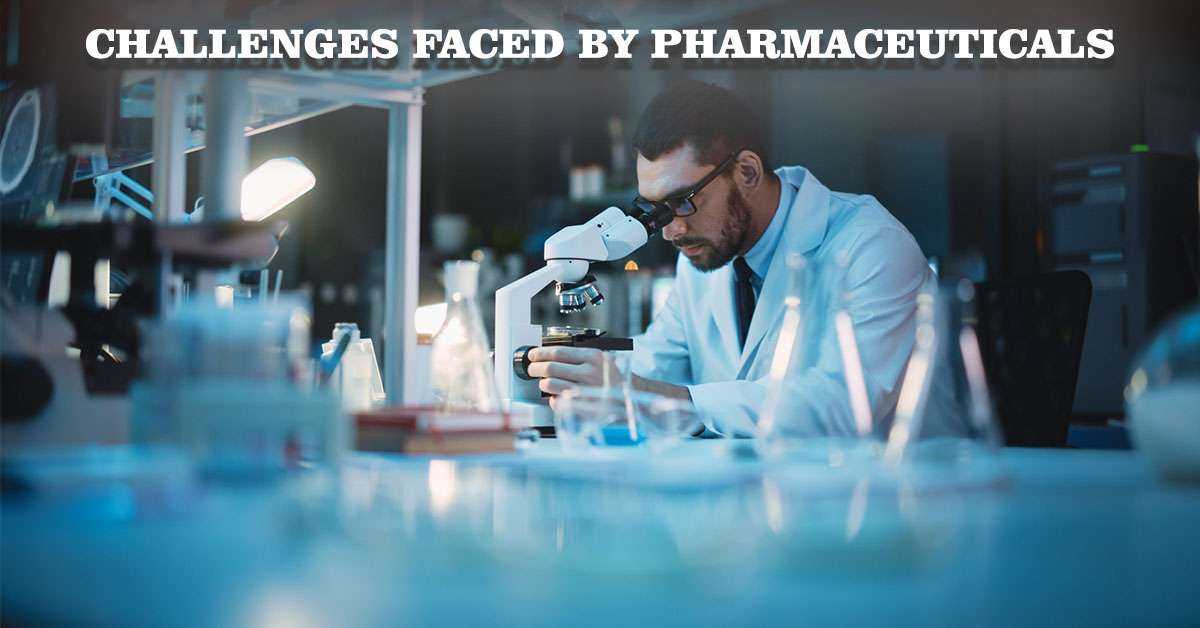Quick Enquiry

What is the largest issue facing pharmaceutical companies today?
In the ever-evolving landscape of the pharmaceutical industry, we uncover a realm where innovation meets necessity. This dynamic sector, pivotal in advancing healthcare, faces a multitude of challenges that require adept navigation. From stringent healthcare regulations to the soaring costs associated with research and development (R&D), each hurdle demands attention and solution-minded strategies. Moreover, the balance between drug pricing and ensuring accessibility adds another layer of complexity. This intricate dance of managing technological advances while adhering to global standards places the pharmaceutical industry at a fascinating crossroads. Join us as we delve into the largest issue facing pharmaceutical companies today, exploring the various dimensions that shape this critical field in our healthcare ecosystem.
The Current Landscape of the Pharmaceutical Industry

Overview of the pharmaceutical industry
The pharmaceutical industry is a complex and ever-evolving sector, central to the global healthcare system. It encompasses the discovery, development, and manufacture of drugs and medications designed to prevent, treat, and cure diseases, enhancing the quality of life for millions around the world. This industry is a significant contributor to the global economy, pouring billions of dollars into research and development (R&D) every year in the quest for new treatments and cures. However, it also faces a multitude of challenges, including strict regulatory environments, high R&D costs, intense competition, and increasing pressure to make drugs more accessible and affordable.
Impact of healthcare regulations
Healthcare regulations significantly impact the pharmaceutical industry, shaping nearly every aspect of its operation. These regulations are put in place by governments and international bodies to ensure drug safety and efficacy, protect public health, and control drug pricing and marketing activities. While necessary, these regulations can also pose a substantial challenge to pharmaceutical companies. The approval process for new drugs is rigorous and time-consuming, often taking several years and involving multiple phases of clinical trials. Additionally, companies must continuously navigate changing regulatory landscapes across different countries, which can complicate global operations and delay drug launches. Compliance with these regulations incurs significant costs and requires ongoing attention to ensure that all aspects of drug development and marketing adhere to the strict standards set by regulatory agencies.
Research and Development Costs
Explanation of R&D costs
Research and development (R&D) are at the heart of the pharmaceutical industry, driving the creation of new and improved medications. R&D costs refer to the expenses associated with the entire process of bringing a new drug to market, including initial research, preclinical studies, clinical trials, regulatory submissions, and the cost of failed projects. This process is incredibly resource-intensive, both financially and in terms of time. Developing a new drug can take over a decade and cost, on average, billions of dollars. The high costs are attributed to the extensive research needed to understand diseases, the development of drug compounds, extensive testing for safety and efficacy, and the high rate of failure – as not all compounds ultimately prove viable as medications.
Challenges and implications of high R&D costs
The high costs associated with research and development present significant challenges for pharmaceutical companies. First and foremost, they create a high financial risk. With the majority of drug projects failing to reach the market, companies must absorb the costs of these failures while continuing to invest in new research. This dynamic can impact the availability and pricing of successful drugs, as companies seek to recoup their investment and fund future R&D efforts. Additionally, the pressure to generate returns on these massive investments can drive companies to focus on developing drugs that promise the highest financial returns, rather than those that meet the most pressing health needs.
This focus can lead to a lack of investment in treatments for diseases that are less common or predominantly affect lower-income countries. Furthermore, the high R&D costs contribute to the high prices of new drugs, making them less accessible to patients in need and straining healthcare budgets. These challenges demand innovative solutions, such as increased collaboration between pharmaceutical companies, governments, and non-profit organizations to share the risks and rewards of drug development, and leveraging technological advances to streamline the R&D process and reduce costs.
In conclusion, the pharmaceutical industry plays a crucial role in advancing healthcare and improving lives through the development of new drugs. However, navigating the current landscape is fraught with challenges, with healthcare regulations and high R&D costs being particularly significant. Addressing these issues requires a concerted effort from all stakeholders in the healthcare ecosystem and a commitment to balancing innovation with accessibility and affordability.
Drug Pricing Concerns
The cost of prescription drugs is a major concern not only for patients but also for healthcare systems worldwide. Pharmaceutical companies face the challenging task of setting prices that reflect the value of the medicine while also ensuring accessibility. The issue of drug pricing is complex, influenced by several factors, and is often at the center of public and policy debates.
Factors influencing drug pricing
Several factors come into play when pharmaceutical companies determine the prices of their products. Research and development (R&D) costs are significant, as bringing a new drug to market is a costly and time-consuming process, often involving billions of dollars and several years of testing. Additionally, regulatory hurdles can add to the cost. The exclusivity period, during which a drug is protected from generic competition, also influences pricing strategies. Market competition and the drug’s value to patients — in terms of effectiveness and the innovation it represents compared to existing treatments — are other critical factors. Global pricing strategies further complicate matters, with companies needing to navigate the varied economic landscapes and healthcare systems of different countries.
Public perception and criticisms
The topic of drug pricing often sparks a public outcry, especially when patients are unable to afford life-saving medications. High-profile cases of significant price hikes have led to widespread criticism of the pharmaceutical industry, with accusations of profit prioritization over patient care. This negative perception can have a ripple effect, influencing policy debates and leading to calls for more stringent regulation of drug prices. The balance between rewarding innovation and ensuring drug affordability remains a contentious issue.
Strategies for addressing drug pricing issues
In response to these challenges, pharmaceutical companies and stakeholders have explored various strategies. One approach is to invest in value-based pricing models, which tie the cost of a drug to its effectiveness and the outcomes it delivers for patients. Transparency in how drug prices are determined is another strategy that some companies adopt to build public trust. Pharmaceutical companies are also increasingly participating in patient assistance programs, offering discounts or free medications to eligible patients. Collaborating with payers, governments, and healthcare providers to find sustainable solutions that ensure access while supporting innovation is critical for addressing drug pricing issues.
Technological Advances in Pharmaceuticals
The pharmaceutical industry is at the forefront of adopting new technologies to revolutionize research, development, manufacturing, and distribution processes. This technological evolution holds the promise of faster, more efficient drug discovery and development, but it also brings new challenges.
Role of technology in pharmaceutical research and development
Technology plays a crucial role in modern pharmaceutical research and development. Artificial intelligence (AI) and machine learning (ML) are being used to analyze vast amounts of data, predict potential drug candidates, and streamline the drug discovery process. This can significantly reduce the time and cost associated with R&D. Other technologies, such as CRISPR for gene editing and 3D printing for creating personalized medications, are pushing the boundaries of what is possible in medicine. Robotics and automation are improving efficiency and precision in drug manufacturing, minimizing human error.
Benefits and challenges of technological advancements
The benefits of these technological advancements are considerable. They enable the development of groundbreaking treatments, improve the precision and personalization of medicine, and can lead to more efficient processes and reduced costs. However, these advancements also present challenges, including high initial investment costs, the need for specialized skills, and concerns about data security and patient privacy. Regulatory frameworks often struggle to keep pace with rapid technological changes, creating additional hurdles for innovation.
Future trends to watch out for
As we look ahead, several future trends in technology promise to further transform the pharmaceutical industry. The continued growth of AI and ML will deepen our understanding of diseases and accelerate drug discovery. The integration of digital health tools, like wearable devices and telemedicine, with pharmaceutical care has the potential to enhance patient outcomes and adherence to treatments. Advances in biotechnology, such as next-generation gene therapy, are set to redefine treatments for genetic diseases. Additionally, blockchain technology could revolutionize the traceability of drugs, combating counterfeit medications and improving supply chain security. Keeping abreast of these trends will be crucial for pharmaceutical companies aiming to lead in innovation and patient care.
Conclusion
In the face of an ever-shifting healthcare landscape, pharmaceutical companies are navigating a complex set of challenges. From adapting to rigorous healthcare regulations and the spiraling costs of research and development (R&D) to pricing drugs in a way that remains both competitive and profitable, the road ahead is steep. Moreover, the rapid pace of technological advancements offers both opportunities and obstacles.
– Healthcare Regulations: A tightrope walk between compliance and innovation.
– R&D Costs: Big investments with uncertain returns.
– Drug Pricing: Balancing affordability with profitability.
– Technological Advances: Navigating the double-edged sword.
To thrive, companies must stay agile, continually adapting their strategies to meet regulatory demands, manage R&D expenditure wisely, set fair drug prices, and leverage technological innovations. The largest issue, therefore, is not just one of these factors but the complex interplay between them all. Success in the pharmaceutical industry now requires a holistic approach, where challenges are not seen in isolation but as interconnected pieces of a larger puzzle.
As we look to the future, it’s clear that the companies that can best navigate these waters will not only contribute significantly to healthcare but will also stand out as leaders in the ever-evolving pharmaceutical industry.

